Originally published July 23, 2019. Updated May 30, 2023
Campaign management is essential for running successful marketing campaigns. Learn what the marketing campaign definition is, as well as how to approach the campaign management process in this guide.
Just before we dive in, let’s make sure we’re clear on what marketing campaigns actually are.
What are marketing campaigns?
Marketing campaigns are concentrated marketing efforts that are used to make the public aware of something big happening at that company, e.g. a sale or a new product.
In 1987, Nike was at a crossroads. Sales at the company were down 18% YoY. Worse, it had just been dethroned from the top of the sales charts by Reebok, which was riding the aerobics wave of the ‘80s.
Nike’s response to this challenge was arguably the most famous marketing campaign of all time - the Just Do It campaign.
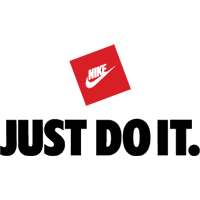 Within a decade of this campaign, Nike was a global behemoth. Sales climbed over 10-fold to $9.2B from $887M. Its market shares grew from 18% to 43%. And perhaps most importantly, Nike changed the way people saw not just athletic wear, but athletes themselves.
Within a decade of this campaign, Nike was a global behemoth. Sales climbed over 10-fold to $9.2B from $887M. Its market shares grew from 18% to 43%. And perhaps most importantly, Nike changed the way people saw not just athletic wear, but athletes themselves.
This is the power of successful marketing initiatives. Whether you’re launching a new product, reactivating interest in an existing one, or changing how people see your brand, a well-executed marketing campaign can be transformative.
Managing a marketing campaign, however, isn’t easy. You have to deal with countless channels, dozens of stakeholders, and an ever-evolving strategy.
In this guide, I’ll shed some light on marketing campaign management. You’ll learn what marketing campaigns are, how to plan them, and most importantly, how to manage them.
WHAT IS MARKETING CAMPAIGN MANAGEMENT?
Creating a marketing campaign is a concentrated effort. It’s usually focused on a singular, consistent marketing message spread across several channels and is meant to achieve a specific business goal.
For the best examples of marketing campaigns, just switch on your TV during Superbowl. Whatever ads you see are usually part of a new, splashy marketing campaign to achieve different goals for the brand.
Marketing campaign management, thus, is the process of planning, executing, tracking, analyzing, and optimizing such campaigns.
While this sounds simple enough, lots of people confuse a marketing campaign with marketing in general.
Understand that a marketing campaign is always focused on a specific message. It usually coexists alongside a company’s other marketing activities.
A business might have one campaign to build up awareness for its new product. At the same time, it might have regular promotions (think of those 20% off deals in your local newspaper) for all the other products in its portfolio.
For example, Nike has a “#JustDoIt” campaign on Twitter that aims to promote the Nike brand vision.
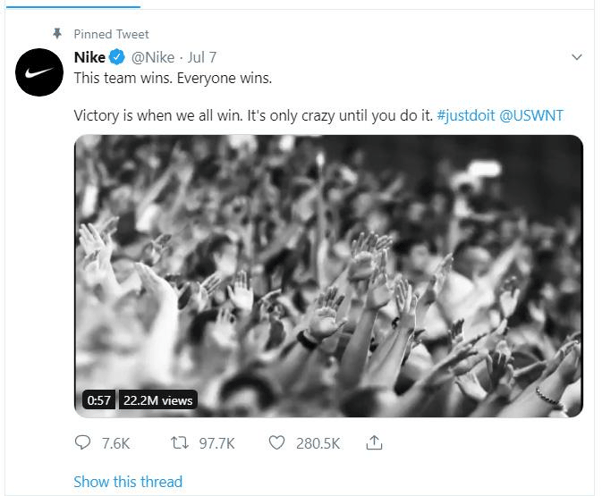
A screenshot of Nike’s Twitter feed where it promotes the #JustDoIt tagline.
At the same time, Nike’s local affiliates maintain separate Twitter accounts where they promote new launches, events, etc. These promotional activities are localized and unaffiliated with the broader #JustDoIt campaign.
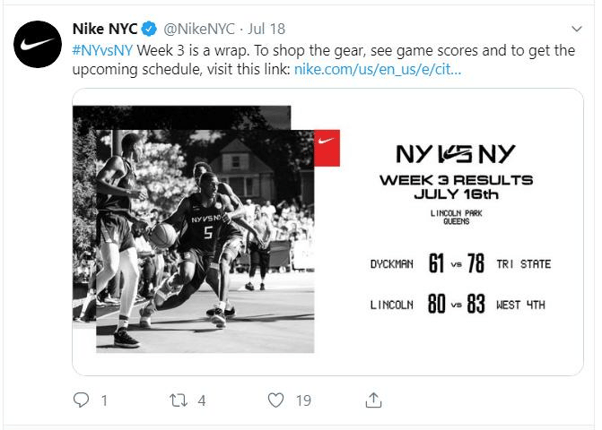
A screenshot of Nike New York Twitter page where it promotes new shoe launches and availability at specific outlets.
These regular and ongoing marketing activities are usually handled by a marketing manager. A specific campaign, on the other hand, is managed by a campaign manager.
It’s common for large brands to have several ongoing marketing campaigns running alongside their regular promotional work. Thus, you’ll have multiple campaign and marketing managers working side by side and sometimes, even competing for resources.
For example, Nike has a city-focused campaign called “NY vs NY” for New York. This campaign runs alongside Nike’s ongoing “Just Do It” work.
Benefits of Marketing Campaign Management
Campaign development has no fixed brief. One brand might run a campaign localized to a single city and pull it from the market in a few weeks. Another might run a successful campaign for years and even decades.
In rare cases, a successful campaign can even become the de-facto voice of the brand and change entire industries. Think L’Oreal’s “Because You’re Worth It” or De Beers’ “A Diamond is Forever”.

De Beers's "A Diamond is Forever" campaign changed the perception of diamonds in the popular imagination (Image source)
Regardless of the scale or scope, most successful marketing campaigns follow the same process. That is, they:
- Understand the business goals
- Develop a strategy to meet these goals
- Create marketing collateral for different channels based on the strategy
- Distribute marketing collateral and track results
- Analyze results and optimize the strategy
And this is just for the initial stages. As the campaign develops, the goals might evolve, the stakeholders might change, and the target audience might grow up.
All of this requires heavy investment in management. You can’t go from a list of business goals to a full-fledged, multi-channel campaign without someone overseeing every aspect of the endeavor.
This someone is a marketing campaign manager.
What Does a Marketing Campaign Manager Do?
A marketing campaign manager is responsible for planning, delegating, and executing marketing campaigns. Let’s use a sales marketing campaign for a food company as an example. Say the food company wants to increase sales by having a week-long sale on all canned products. The marketing campaign manager would plan the sale, including the strategy behind it, i.e., how the sale will cause an increase in sales both in the short term and in the long term. They would then organize a creative team, including marketers, designers, and copywriters, to name a few. Team members would be assigned roles and the marketing campaign manager would be responsible for ensuring that tasks are completed effectively and on time. When the marketing campaign is over, the marketing campaign manager would assess the results of the campaign, draw up reports, and use the data to improve future campaigns.
Essentially, marketing campaign management brings structure and order to your marketing work. It takes you from a business that runs ad-hoc promotions to one that focuses all its messaging on meeting a single, specific goal.
In the next section, we’ll do a deep dive into marketing campaign management, how it works, and how to use it.
HOW TO CREATE A MARKETING CAMPAIGN
In its most basic form, the campaign management process is easy to understand. You start with an intended goal, you develop a strategy to serve that goal, and you create collateral based on this strategy.
Once you have collateral, you distribute it and analyze the results. Based on the results, you can change the collateral and review your strategy.
Let’s start with the first step in this process: the campaign goals and broader vision.
Understand the goals and purpose of the campaign
Goals and purpose might be synonyms in a dictionary, but when building a campaign, they represent different things.
Goals
Goals are the specific, actionable objectives you want to achieve with the campaign. Good goals are SMART, i.e. Specific, Measurable, Attainable, Realistic, and Time-Related.
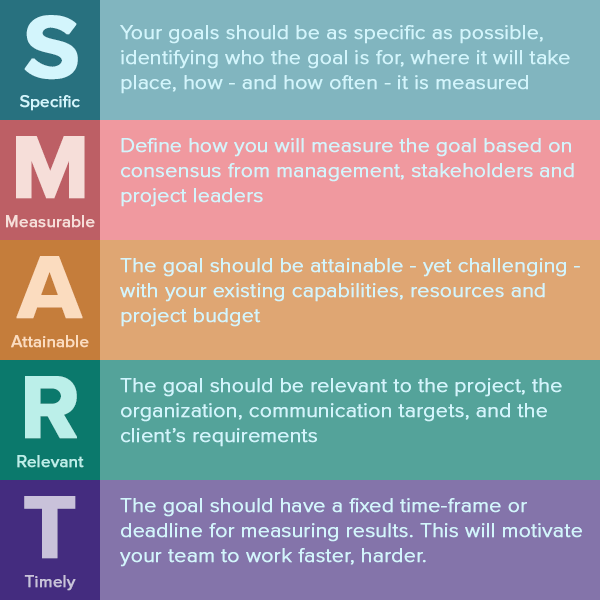
“Increase market share by 2% within 12 months” is a SMART goal. “Grow crazy fast” isn’t - it’s neither clear nor specific.
But before you can drill down to the goals, you have to understand the purpose of the campaign.
Purpose
Purpose represents the broader vision of the campaign - the reason for its existence. Why does the campaign exist? How does it fit into the brand’s broader marketing initiatives and brand positioning? What long-term shift does the brand campaign aim to achieve?
Purpose is a way to contextualize the campaign - within the brand, the market, and the broader social zeitgeist. A campaign’s goal might be to increase traffic to a brand’s website, but its purpose might be to reposition the brand for a younger audience.
Think deeply about this if you want to fully understand campaign management. It’s easy to focus too much on the goals that you miss the more intangible purpose.
How to figure out the campaign’s goals and purpose
To figure out a campaign’s goals and purpose, ask the brand: what do you want to achieve? Where do you want to see the brand - in 6 months, 2 years, and 10 years?
For instance, a brand might want to grow traffic to its website. At the same time, it might want to become a favorite Gen-Z brand.
Thus, the campaign’s goal would be:
- Increase social media traffic by 25% in 12 months
The underlined parts represent the measurable, realistic parts of the campaign goal (“increase traffic by 1,000% in 1 week” wouldn’t be a SMART goal).
At the same time, the purpose would be to increase brand visibility and viability among the 18-24 aged audience.
This purpose would affect what kind of creative you create and where you distribute it. If your ads feature 40-year-old models and are distributed on Facebook, you’re not going to attract a lot of 18-24-year-olds.
Try asking clients these questions to understand the campaign’s purpose and goals:
- What is the single most important thing you want from this campaign?
- How happy are you with the brand’s current positioning? What would you want to change, if anything?
- What kind of results do you hope to get within 1 month, 6 months, 1 year, 3 years, and 5 years?
- How is this campaign positioned in relation to your other campaigns?
- What are the most important metrics for you? How are you currently performing on these metrics?
Establish key metrics and how to measure them
Regardless of how broad the goals and purpose of a campaign might be, you have to establish three things:
- The metrics you’ll use to measure success
- How you’ll measure these metrics
- What constitutes “success” for these metrics
For example, in a PPC campaign, the “number of leads generated” might be a metric of success. You’ll measure it by calculating the number of leads captured in the CRM. And you might have a benchmark figure - say, 500 leads/month - as a measure of success.
Different campaign goals will have different metrics. For a B2B sales campaign, the number of MQLs (Marketing Qualified Leads) might be a measure of success, while for a branding campaign, the number of direct website hits (i.e. type-in traffic) can be a key metric.
You’ll have to work with the client to agree on the key performance indicators (KPIs) and how you’ll measure them. And as for benchmark figures, figure out where the brand currently stands and what kind of results you can deliver. 30% YoY growth is unrealistic for a mature brand but not unreasonable for a new business.
Develop a Strategy
If the goals and purpose are the destinations, “strategy” charts the map you’ll use to get there.
Developing a strategy is a complex topic that deserves its own post. Strategy is also something campaign managers don’t usually work on - that’s the job of brand/creative strategists.
However, we’ll briefly talk about the most important ingredient in strategy below: your audience.
Understand the target audience
Everything in a marketing campaign springs from the audience. Whether you advertise on late-night TV or Snapchat, whether your ads are fun or serious - all will depend on the audience.
Understanding this audience, where it hangs out, and what it wants is arguably the most important part of a successful campaign. A poorly managed campaign can still hit its mark if it can deliver its key message to its key audience.
While there is a lot of nuance to understanding audiences, the most important elements remain:
- The audience’s demographics and psychographics, including their interests, wants, and desires
- Where the audience can be found and what is their relationship with these mediums (participatory or passive?)
- The audience’s tastes and consumption patterns, especially in terms of creative choices.
How you get all this data will depend on how much information you currently have (large brands usually have exhaustive research and data on their customers) and your existing resources/budget.
If you have the resources, you might want to conduct a detailed customer survey. If you don’t have that information, off-the-shelf data from sources like Facebook Insights will have to do.
While you’re off understanding audiences, do keep an eye on current trends and the cultural zeitgeist. As the great Wayne Gretzky said, you have to be where the puck is going, not where it currently is. If you see any developing trend, it’s better to latch onto it than to focus on outdated norms.
Also, consider your capabilities when developing your strategy. Your best audience might be on TV, but if your digital agency has never made a TV campaign before, it might be better to stick to digital mediums.
Create Your Marketing Collateral
Blog posts, YouTube videos, TV ads, banner ads - any content you create in the service of a marketing goal can be said to be your “marketing collateral”.
What kind of marketing collateral you create will depend on three things:
- Your capabilities, i.e. what you can create
- Your audience, i.e. what you need to create
- Your budget, i.e. what you can afford to create (and distribute)
If you’re a creative agency, developing marketing collateral should already be your forte. After all, this is the heart of what your business offers. So I won’t go into the creative development process in detail but just offer a few pointers in regard to campaign management:
Focus on the entire campaign
A campaign isn’t just a single piece of creative collateral (such as an ad). It’s every single point of interaction between the audience and the brand, and even between the agency and the brand.
Thus, when you’re developing the collateral, map the campaign from start to finish. Include every single customer touchpoint.
In an ad campaign, for instance, you’ll want to make sure that the following are on-brand and consistent with the campaign as well:
- Landing pages and forms
- Emails
- Website and other content pages
Even ancillary interactions (such as text alerts) and brand-agency interactions (such as campaign reports) should be on-brand.
As a campaign manager, make sure that you gather and align resources for all this material, not just your primary collateral. Factor it into your campaign budget as well.
Align your creative and distribution resources
Good marketing isn’t just creatively good; it is also distribution-focused. Think of campaigns that have social media potential built-in, like Coca-Cola’s massively successful “share it with” campaign.

Coca-Cola's "Share a Coke with a friend" campaign was designed for the friend-tagging, social-sharing age (Image source)
Being distribution-focused also means you have to choose channels that are distribution friendly. If you have a budget for a 15-second ad spot but not for a longer 5-minute video, you’ll want to focus your distribution efforts on Instagram/Snapchat, not YouTube.
As the campaign manager, your goal should be to get your creative and distribution teams together. Get them to moderate each other’s ideas. An idea that is focused entirely on distribution risks being creative and stale. And an idea focused just on creativity might not have enough legs to run.
Focus on your key goals
The campaign manager has a key role to play in the collateral-creation process: align creative efforts with campaign goals.
Creative teams can sometimes get too creative and lose sight of the specific goals of the campaign. It’s your job as the manager to rein them in and point them in the right direction. In a landing page design, if a creative focuses on the copy, you should also get them to focus on the CTA. In a video ad, it’s your goal to get them to keep messaging on-brand.
Keep an eye on budgets and schedules
Creative campaigns are notorious for going off-budget and schedule. As the campaign manager, it’s crucial that you keep an eye on the costs and to-dos. Is a part of the campaign lagging behind? Have you used up too much of the budget too early in the campaign?
It’s your job to monitor your teams and get them back on track if necessary.
Final Steps
The final step in the campaign management process: distribute the collateral and analyze the results.
If you’ve already mapped your strategy, you should have a clear distribution plan. Make sure that this plan aligns with your budget (which is also why it’s crucial to keep creative team budgets in check).
Once you’ve distributed your collateral, dig in and analyze the results. Again, you should have a clear method for collecting and measuring key data, as outlined in the first step.
Based on your analysis, start modifying things. Does the creative need some tweaks? Should you try a different distribution method? Should you increase the distribution budget? Or do you need a new strategy altogether?
It’s a good idea to adopt an incremental approach to changes, i.e. modify the easiest and cheapest parts first before committing to bigger alterations. Instead of developing a new strategy, you might change the location and design of the CTA to get more clicks, for instance.
Types of marketing campaigns
‘Marketing campaign’ is a pretty generic term as there are many different types of marketing campaigns. Let’s split them up into 8 categories:
1. Social media marketing campaign
The advantage of harnessing social media to market a brand is that you can focus your messaging on the people who are already interested in your brand. For example, if a catering company already has a following on Instagram, running its marketing campaign on Instagram is very likely to be successful, as its target audience is already there.
2. Email marketing campaign
Emails are very useful for nurturing current clients, as well as turning potential leads into paying clients. A weekly email in a client’s inbox keeps you at the top of their mind. Including interactive aspects like questionnaires helps you keep a finger on your client's needs and wants.
3. Seasonal push campaign
Some brands operate within a seasonal structure. Clothing companies are a prime example - people need very different wardrobes for different seasons. Therefore, when autumn turns to winter, or when spring turns to summer, retail stores tend to conduct seasonal push campaigns. This type of campaign can take many forms, from an email into a shopper's inbox encouraging them to check out their new season’s collection, to a TV or newspaper ad.
4. Brand awareness campaign
For a brand to stand out amongst a world full of brands, they need to be recognizable. To achieve recognizability, brands create brand awareness campaigns that help their target audience notice and remember them. For example, UK supermarket Tesco’s slogan ‘every little helps’ has been a Tesco hallmark for decades, which customers recognize and identify with.
5. Product launch campaign
When a company wants to launch a new product, they’ve got to get the word out somehow. A product launch campaign aims to put the new product front and center of the target audience so that people know about the new product and are excited about the idea of purchasing it.
6. Sales campaign
This type of marketing campaign attempts to speed up the sales process and attract new customers by offering discounts. A restaurant, for example, could have a month-long ‘meal deal’ where they offer a burger, fries, and a drink as a package that would be cheaper than buying each item separately. This would attract customers looking to pay as little as possible for their restaurant meal and if they enjoyed the experience, they’re likely to choose that restaurant over another even when there is no sale. Sales campaigns are effective, but only when used in moderation. Constant sales devalue a brand as they convey the message that ‘we are only ever worth your money when we’re on sale’.
7. SEO campaign
In a digital age, a brand’s success can literally depend on how well-optimized its online presence is. If, when consumers search for the product you sell, you’re only ranked number 53 on Google’s SERP, your organic reach is extremely limited. The idea of an SEO campaign is to bring you higher up in the SERP to increase the chances of potential customers clicking on your website and buying your product.
8. Rebranding campaign
Sometimes, a company needs to change its look in order to stay current or meet new customer needs. For example, this year, Dunkin Donuts became ‘Dunkin’. This new, shorter name reflects a more modern generation and is therefore likely to attract the customer of today.
How can Workamajig help you with your marketing campaign management?
This final analyze-and-improve phase that we spoke about above, is crucial in campaign management. Having access to a tool like Workamajig that lets you monitor the entire campaign in a single dashboard makes your work incredibly simpler.
Workamajig allows you to:
- Easy convert leads into contact & company records with full conversation history
- Get full pipeline visibility & see opportunities by stage, status & probability to close
- Set goals for the team & track performance against target revenue
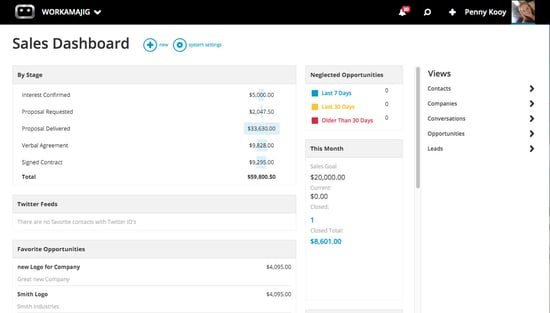
- Easily move a contact through your entire sales workflow, from start to finish.
- Send estimates from your project templates, or create one from scratch, including hours, labor, expenses, & more.
- Get approval, create live projects, and have everything ready for the project manager
- …all from Workmajig’s sales dashboard.
Revolutionize your campaign management with Workamajig today!

